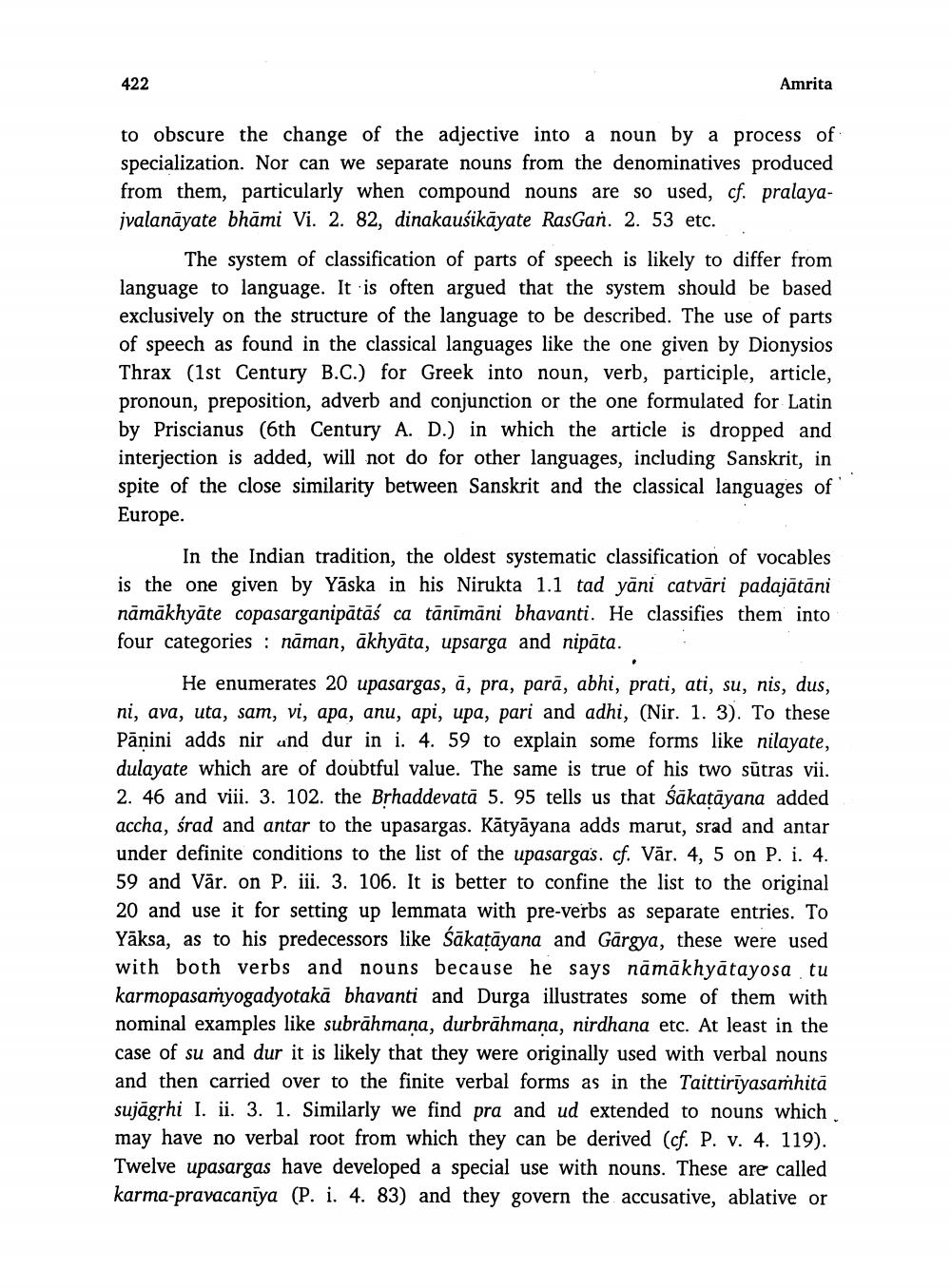________________
422
Amrita
to obscure the change of the adjective into a noun by a process of specialization. Nor can we separate nouns from the denominatives produced from them, particularly when compound nouns are so used, cf. pralayajvalanāyate bhāmi Vi. 2. 82, dinakausikāyate RasGan. 2. 53 etc.
The system of classification of parts of speech is likely to differ from language to language. It is often argued that the system should be based exclusively on the structure of the language to be described. The use of parts of speech as found in the classical languages like the one given by Dionysios Thrax (1st Century B.C.) for Greek into noun, verb, participle, article, pronoun, preposition, adverb and conjunction or the one formulated for Latin by Priscianus (6th Century A. D.) in which the article is dropped and interjection is added, will not do for other languages, including Sanskrit, in spite of the close similarity between Sanskrit and the classical languages of Europe.
In the Indian tradition, the oldest systematic classification of vocables is the one given by Yāska in his Nirukta 1.1 tad yāni catvāri padajātāni nāmākhyāte copasarganipātās ca tānīmāni bhavanti. He classifies them into four categories : naman, ākhyāta, upsarga and nipāta.
He enumerates 20 upasargas, ā, pra, parā, abhi, prati, ati, su, nis, dus, ni, ava, uta, sam, vi, apa, anu, api, upa, pari and adhi, (Nir. 1. 3). To these Pāṇini adds nir und dur in i. 4. 59 to explain some forms like nilayate, dulayate which are of doubtful value. The same is true of his two sūtras vii. 2. 46 and viii. 3. 102. the Brhaddevatā 5. 95 tells us that sākatāyana added accha, śrad and antar to the upasargas. Kātyāyana adds marut, srad and antar under definite conditions to the list of the upasargas. cf. Vār. 4, 5 on P. i. 4. 59 and Vār. on P. iii. 3. 106. It is better to confine the list to the original 20 and use it for setting up lemmata with pre-verbs as separate entries. To Yāksa, as to his predecessors like Śākatāyana and Gārgya, these were used with both verbs and nouns because he says nāmākhyātayosa tu karmopasamyogadyotakā bhavanti and Durga illustrates some of them with nominal examples like subrāhmana, durbrāhmana, nirdhana etc. At least in the case of su and dur it is likely that they were originally used with verbal nouns and then carried over to the finite verbal forms as in the Taittirīyasamhita sujāgrhi I. ii. 3. 1. Similarly we find pra and ud extended to nouns which may have no verbal root from which they can be derived (cf. P. v. 4. 119). Twelve upasargas have developed a special use with nouns. These are called karma-pravacaniya (P. i. 4. 83) and they govern the accusative, ablative or




